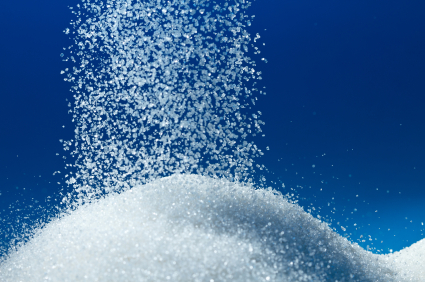Is sugar toxic? The new documentary Sugar Coated explores how the food industry has hoodwinked us to stop asking this important question. The documentary zeroes in on how eating too much sugar is a key culprit driving alarming increases in obesity, diabetes, heart disease, and likely dementia too.
I watched the show this week and thought it was well done. Leading health experts from both sides of the Canada-United States border provided evidence-based perspectives on the history of sugar marketing and where we are today. Kudos to the producers for leading with the soft, sweetly tinkling music of Tchaikovsky’s Dance of the Sugar Plum Fairy and then ending with a sultrier, swing version of the same tune. For me, this echoed how we’ve been seduced throughout our lives by the charms of the food industry and ultimately the white powder itself.
Here are some of the key points that resonated with me:
- The food industry duped us into believing that sugar “isn’t all that bad.” As uncovered by Cristin Kearns, D.D. S., that was their purposeful strategy, putting profits ahead of public health. Kearns’ investigation found that the sugar industry worked closely with the National Institutes of Health in the 1960s and ‘70s to develop a research program focused on approaches other than sugar reduction to prevent children’s tooth decay. Dr. Kearns now works as a postdoctoral scholar at the University of California at San Francisco (UCSF). Her mandate is to demonstrate similarities between the sugar and tobacco industries. She is collaborating with Stanton Glantz, Ph.D., who is no stranger to taking on big industry to protect public health. In the ’90s, Glantz discovered similar papers by the tobacco industry, papers that led to massive settlements between the tobacco industry and every U.S. state, as well as the successful prosecution of the major tobacco companies and their research organizations under the Racketeer Influenced and Corrupt Organizations Act.
- The food industry/sugar association influenced the FDA’s decision in the 1970s qualifying added sugar as Generally Recognized as Safe (GRAS) and they won a major public relations award, a Silver Anvil, from the Public Relations Society of America for doing so.
- Scientists have known about the health risks of added sugar for decades. Scientists at the United States Department of Agriculture (USDA) published a paper back in the early ’80s that concluded added sugar leads to increased insulin, blood sugar and insulin resistance. Thinking back to the early ’80s, I remember the hype and promise of low-fat baked goods when I worked in brand marketing for large consumer packaged goods companies. One dedicated a lot of resources to develop olestra, an indigestible fat made from vegetable oil and sucrose that would have a zero calorie impact. The other was looking for ways to keep low-fat baked goods from tasting like sawdust, adding extra sugar to SnackWell’s cookies to make them palatable.
- Excess sugar makes our livers fat, similar to duck pâté. The illustration that drew a parallel between how foie gras is made and how we are making our own livers fat by consuming added sugar was very compelling — I will never eat pâté again.
- It has been in the food industry’s best interest to promote the energy balance fallacy. All calories are not equal: our bodies metabolize fat, carbohydrate and protein calories differently. The food industry has focused on the myth that we gain weight when we consume more calories than we burn for too long because it has been in their best interests to get us to buy into that falsehood. I’m looking forward to the day when Nutrition Facts labels on Canadian food packages show the percentage daily value for sugar, not just the amount of sugar. In case you are wondering, 4 g of sugar equals 1 teaspoon. The Heart and Stroke Foundation’s recommendations for sugar state that daily intake should not exceed 10 per cent of total calories and that for an average 2,000-calorie-a-day diet, 10 per cent is about 48 g or 12 teaspoons of sugar. One can of pop contains about 85 per cent of the daily added sugar limit.
I was glad to see these experts featured in Sugar Coated:
- Gary Taubes, author of Why We Get Fat and Good Calories, Bad Calories, and co-founder of the Nutrition Science Initiative (NuSI) which I covered in an earlier post: Will NuSI studies find obesity’s causes? I haven’t read these books yet, but I’m putting them on my summer reading list.
- Robert H. Lustig, M.D., an American pediatric endocrinologist and professor of clinical pediatrics at UCSF. Dr. Lustig is the author of Fat Chance: Beating the Odds Against Sugar, Processed Food, Obesity, and Disease. It’s a great book if you haven’t read it already. You may have also read his New York Times story in 2011: Is Sugar Toxic? or watched one of his videos, such as his 2013 talk at TEDX Bermuda, Sugar — the elephant in the kitchen.
- Yoni Freedhoff, M.D., a leading obesity expert on both sides of the border who regularly takes on the food and beverage industries for health-washing claims and holds them to task. In Canada, he blogged about the Heart and Stroke Foundation’s Health Check program for several years. The program allowed food manufacturers to add a Health Check logo to food packages, but large loopholes allowed products full of added sugar to qualify as containing fruit. Kudos to Freedhoff’s work which led to the HSF pulling the program and to the HSF ending it and issuing new, strong guidelines about added sugar. Freedhoff is the author of The Diet Fix: Why Diets Fail and How to Make Yours Work (which I wrote about for The Costco Connection in 2014).
If you missed it, you can watch Sugar Coated online until May 26, 2021. It’s an hour well invested if you want to learn more about the health risks of eating too much sugar and some of the politics driving food manufacturing.
If you do, let me know what points resonated with you in the comments.
You may also like my earlier posts about added sugar:




